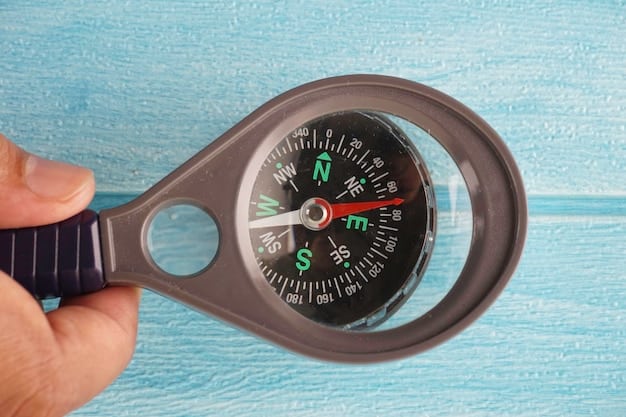Developing Your Intuition: 3 Practical Exercises

Developing your intuition involves honing your ability to understand or know something without conscious reasoning, and this can be strengthened through various exercises that enhance your inner guidance system.
Do you ever feel like you just *know* something, deep down, without being able to explain why? That’s your intuition at work. Developing your intuition is like strengthening a muscle – the more you use it, the stronger and more reliable it becomes. By tapping into this inner guidance system, you can make better decisions, navigate complex situations, and live a more authentic life.
Understanding Intuition: More Than Just a Gut Feeling
Intuition is often dismissed as a “gut feeling” or a hunch, but it’s much more than that. It’s a complex process involving the subconscious mind, past experiences, and sensory input that allows us to make connections and understand things in ways that logic alone cannot.
The Different Types of Intuition
While we often think of intuition as a single entity, it can manifest in various forms. Recognizing these different types can help you better understand and interpret your own intuitive experiences.
Physical Intuition
This is perhaps the most commonly recognized form of intuition. It often presents as a physical sensation, such as a knot in your stomach, a flutter in your chest, or goosebumps. These sensations are your body’s way of alerting you to something important, whether it’s danger, opportunity, or a strong pull towards a particular course of action.
Emotional Intuition
Emotional intuition involves sensing the feelings and emotions of others, even when they are not explicitly expressed. It’s the ability to pick up on subtle cues in someone’s tone of voice, body language, or facial expressions and understand their underlying emotional state.
- Listen to Your Body: Pay attention to physical sensations and try to identify patterns.
- Reflect on Your Feelings: Take time to understand your emotions and where they might be coming from.
- Practice Mindfulness: Stay present and aware of your surroundings to better pick up on subtle cues.

Exercise 1: The Intuitive Journaling Exercise
Journaling is a powerful tool for self-reflection and gaining clarity. When used with intention, it can also be an effective way to tap into and develop your intuition.
This exercise will help you connect with your inner voice and learn to recognize the subtle cues that your intuition provides. Find a quiet space where you can be alone with your thoughts, grab a journal and a pen, and follow these steps:
Write down a question or a problem that you’re currently facing. It could be anything from a career decision to a relationship issue to a creative block.
Without thinking too much, begin writing down whatever comes to mind. Don’t censor yourself or worry about grammar or spelling. Just let the words flow freely from your pen.
Continue writing for at least 10-15 minutes, even if you feel like you’re running out of things to say.
You might be surprised at what emerges from your subconscious mind. You may uncover new insights, perspectives, or solutions that you hadn’t considered before.
After you’ve finished writing, take some time to reflect on what you’ve written. Look for patterns, themes, or recurring ideas. Did anything surprise you?
This exercise can be done daily or whenever you need guidance or clarity. The more you practice, the easier it will become to access your intuition and trust your inner wisdom.
Exercise 2: The Object Reading Exercise
This is fantastic exercise for developing your intuition that helps you to connect with the energy of objects and people. It involves holding an object and trying to sense information about its history, owner, or purpose.
Finding an Object
Choose an object that belonged to someone you don’t know well, or even a stranger. This could be a piece of jewelry, a photograph, a book, anything that carries a certain amount of history.
Connecting with the Object
Close your eyes, hold the object in your hands, and take a few deep breaths. Focus on the sensation of the object in your hands – its weight, texture, temperature.
Sensing Information
Now, try to sense information about the object’s history, owner, or purpose. What images, feelings, or thoughts come to mind? Don’t try to analyze or overthink – just allow the information to flow freely.
- Record Your Observations: Write down everything that comes to mind, even if it seems random or insignificant.
- Verify Your Information: After you’ve finished sensing the object, try to verify your information by talking to the object’s owner or researching its history.
- Practice Regularly: The more you practice object reading, the more accurate and reliable your intuition will become.
Exercise 3: The Meditation and Visualization Exercise
Meditation and visualization are powerful tools for quieting the mind and connecting with your inner self. This combination can be incredibly effective for developing your intuition.
Find a quiet space where you won’t be disturbed, sit comfortably, and close your eyes. Take a few deep breaths to relax your body and calm your mind.
The Visualization
Imagine that you are standing in a beautiful, peaceful place. It could be a forest, a beach, a mountaintop, or any other setting that feels safe and calming to you. Visualize every detail of this place – the colors, sounds, smells, and textures.
Your Inner Guide

Imagine that you are meeting with a wise guide or mentor in this place. This could be a real person who has inspired you, an imaginary figure, or a representation of your higher self. Ask your guide for advice or guidance on a particular issue that you’re facing. Listen carefully to what your guide has to say, and trust that you are receiving the wisdom that you need.
Continue meditating and visualizing for at least 15-20 minutes. When you’re finished, take a few deep breaths and gently open your eyes.
Write down any insights, messages, or feelings that you received during your meditation. Reflect on how you can apply this wisdom to your life.
Integrating Intuition into Daily Life
Developing your intuition isn’t just about doing exercises – it’s about integrating intuitive awareness into your daily life. Here are some practical tips for incorporating intuition into your decision-making and problem-solving processes:
- Trust Your Gut: When faced with a decision, pay attention to your initial gut reaction, and consider the ways that it can influence your decisions.
- Seek Feedback: Ask for feedback from trusted friends, family members, or mentors.
- Practice Self-Compassion: Be kind to yourself when you make mistakes, and use them as opportunities to learn and grow.
Integrating intuition into your daily life is a journey that requires patience, practice, and self-compassion. By consistently honing your intuitive skills and trusting your inner guidance, you can unlock your full potential and live a life that is aligned with your true purpose.
Overcoming Blocks and Challenges
Like any skill, developing your intuition can come with its own set of blocks and challenges. It’s important to recognize these obstacles and develop strategies for overcoming them.
Fear and doubt can be major roadblocks to intuitive development. Many people are afraid of trusting their intuition because they fear making mistakes or being judged by others. It’s important to remember that intuition is not infallible, and that mistakes are a natural part of the learning process.
To overcome fear and doubt, challenge your negative beliefs, practice self-compassion, and surround yourself with supportive people who believe in your potential.
The Power of Presence
Being fully present in the moment is essential for cultivating intuition. When you’re distracted by thoughts, worries, or external stimuli, it becomes much harder to access your inner wisdom. Practice mindfulness techniques like meditation, deep breathing, or mindful walking to cultivate a sense of presence and awareness.
| Key Point | Brief Description |
|---|---|
| 🧠 Intuition Defined | Understanding intuition involves recognizing it as more than just a “gut feeling.” |
| ✍️ Journaling | Journal to freely write about a problem, then reflect to find insights. |
| 🧘 Meditation | Meditate and visualize a peaceful place, consult an inner guide for wisdom. |
| 🌟 Daily Life | Integrate intuition into daily decisions by trusting your gut and seeking feedback. |
Frequently Asked Questions
▼
Intuition is the ability to understand something immediately, without conscious reasoning. It is often described as a “gut feeling” or a sense of knowing.
▼
Yes, absolutely! Intuition is like a muscle – the more you use it, the stronger it becomes. With practice and patience, anyone can learn to access and trust their intuition.
▼
It’s best to incorporate these exercises into your routine as often as you can. Aim for at least a few times a week to start, and then gradually increase the frequency as you become more comfortable.
▼
Don’t worry if you don’t feel anything right away. Intuition can be subtle and takes time to develop. Just keep practicing and trust that you are making progress, even if you don’t see immediate results.
▼
Yes, it is possible. Intuition is not infallible, and it’s important to balance it with logic and reason. Use your intuition as a guide, but always do your due diligence before making important decisions.
Conclusion
Developing your intuition is a journey of self-discovery and empowerment. By incorporating these exercises into your daily life, you can tap into your inner wisdom, make better decisions, and live a more fulfilling life. Remember to be patient, persistent, and trust in the process. Your intuition is there to guide you – all you have to do is listen.





